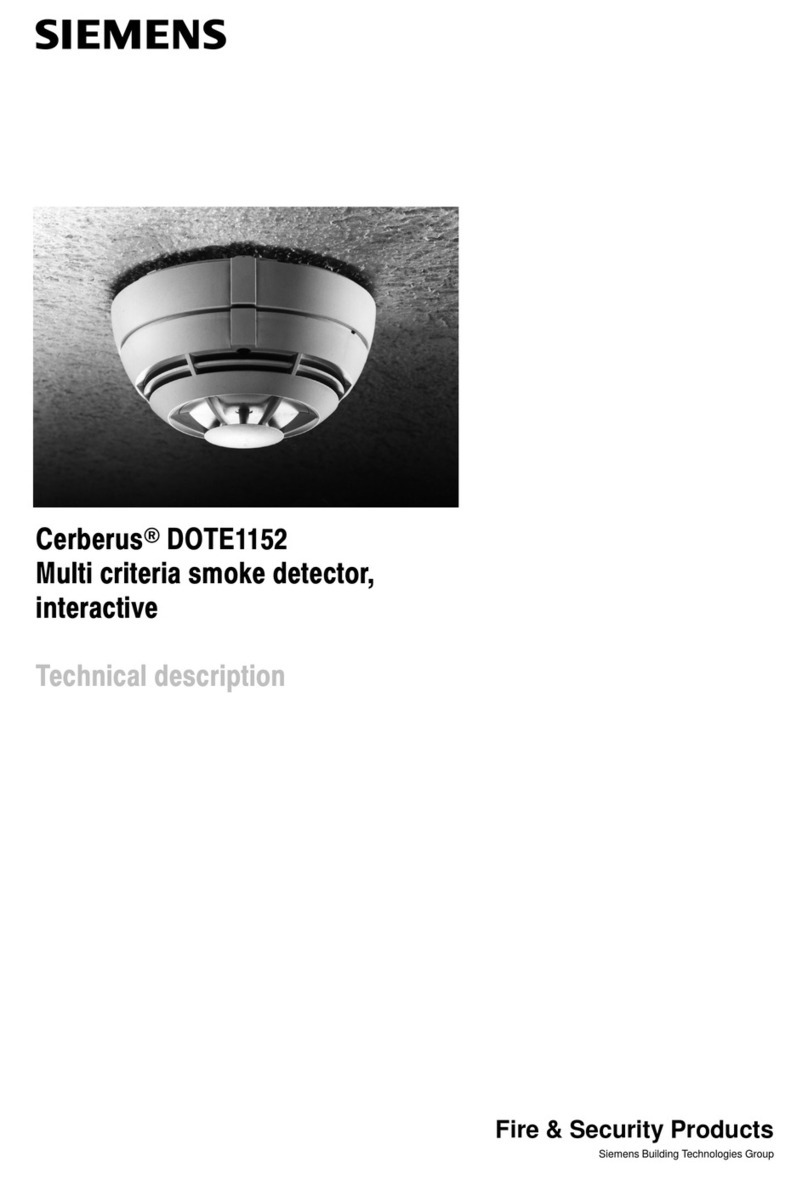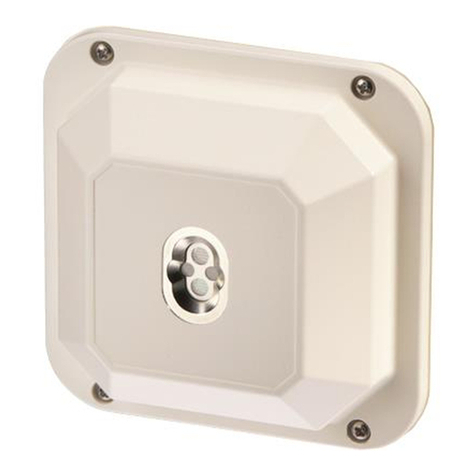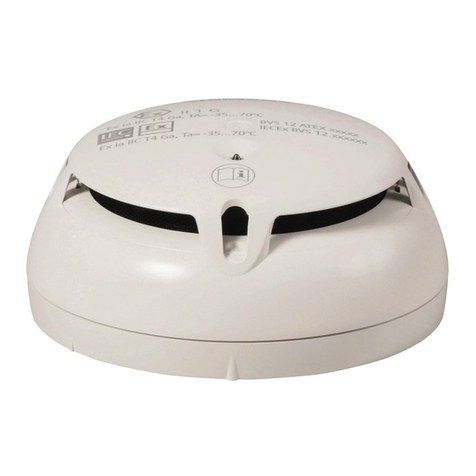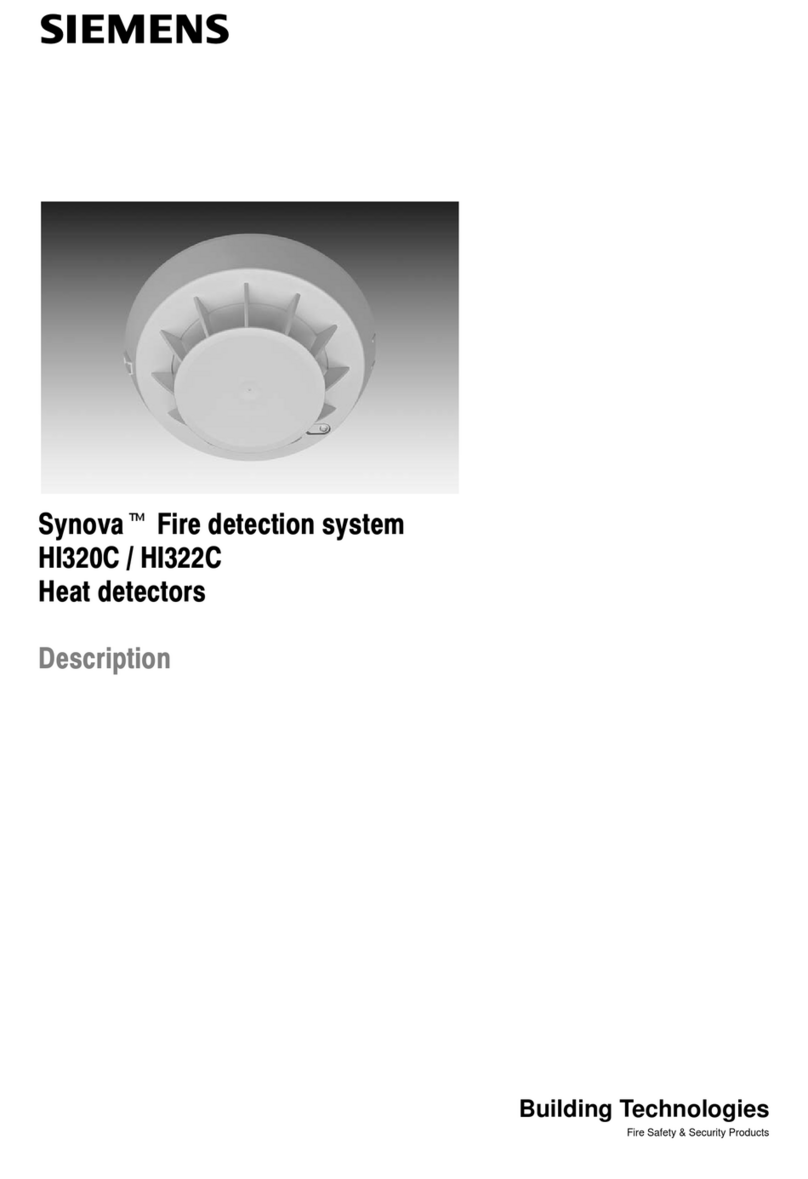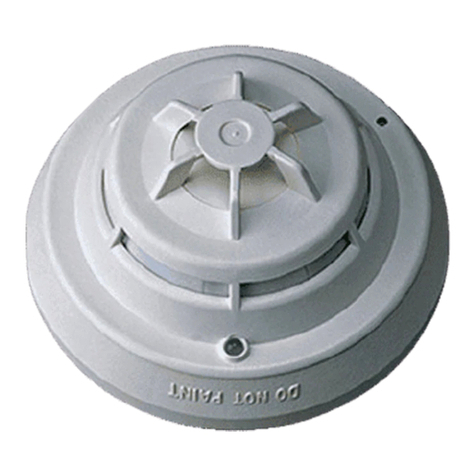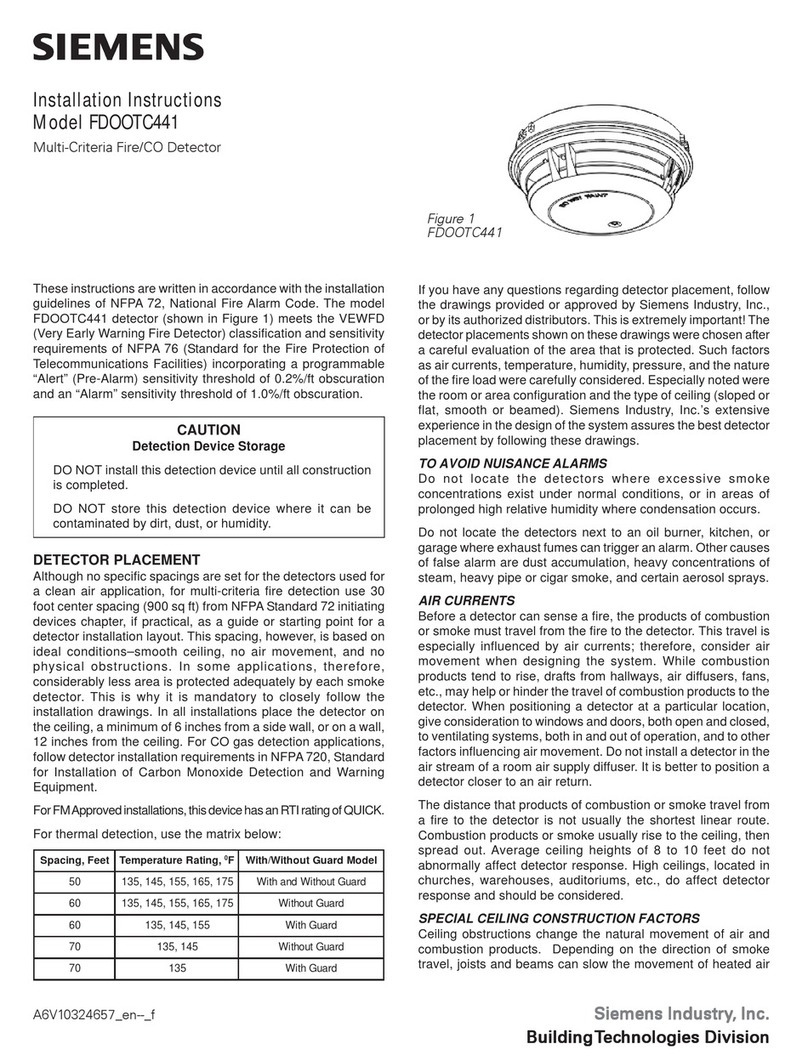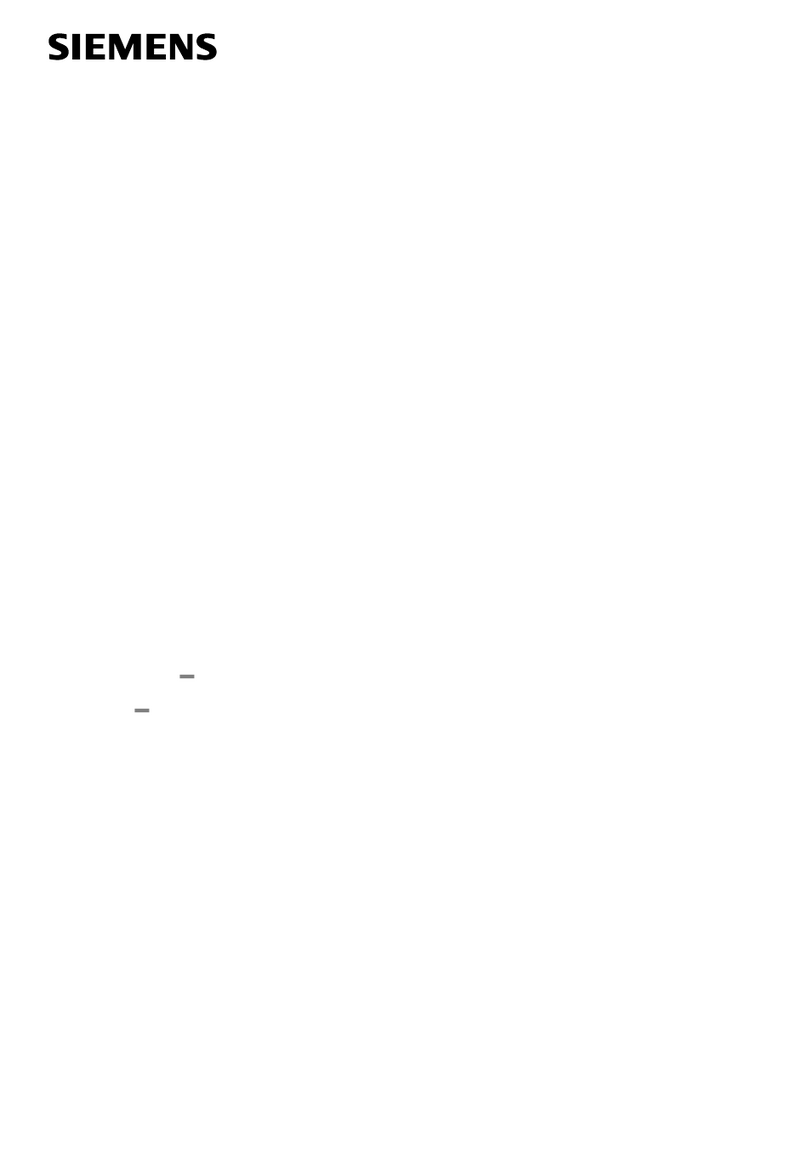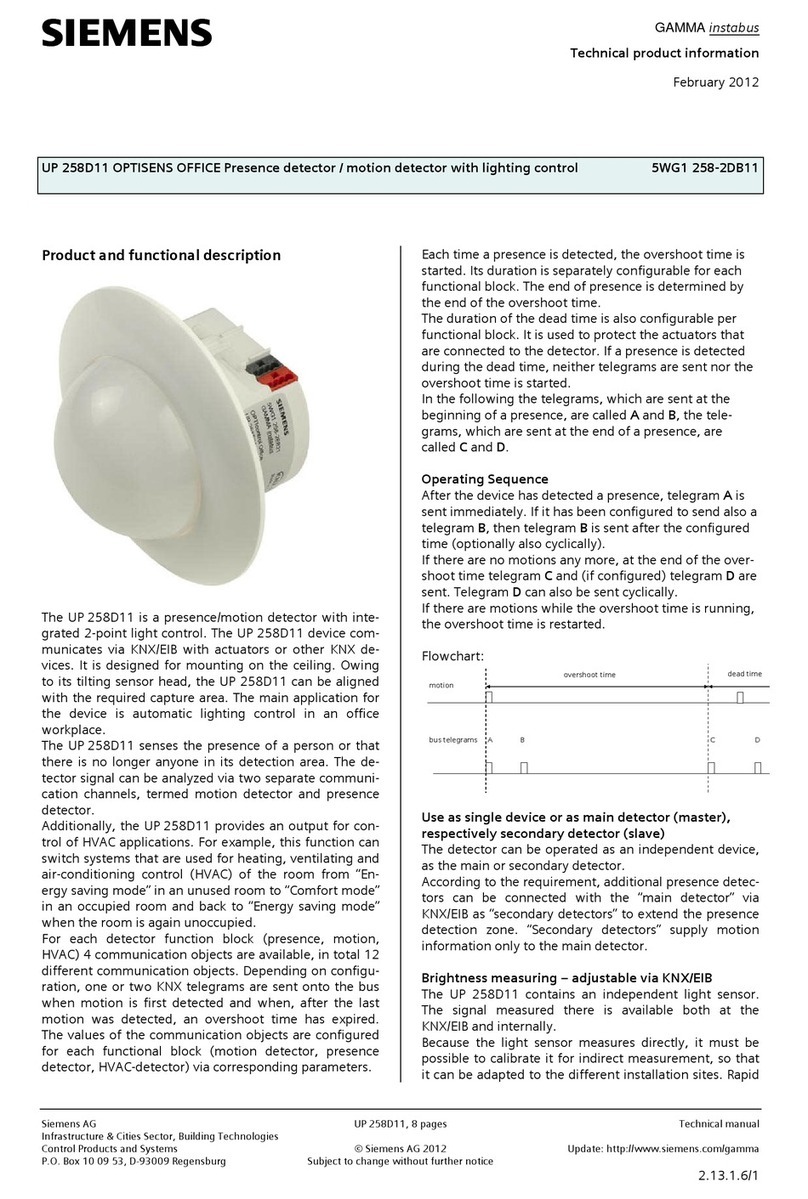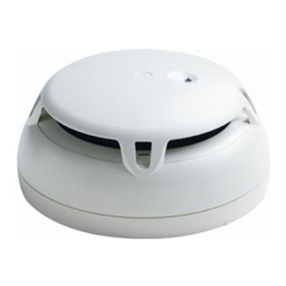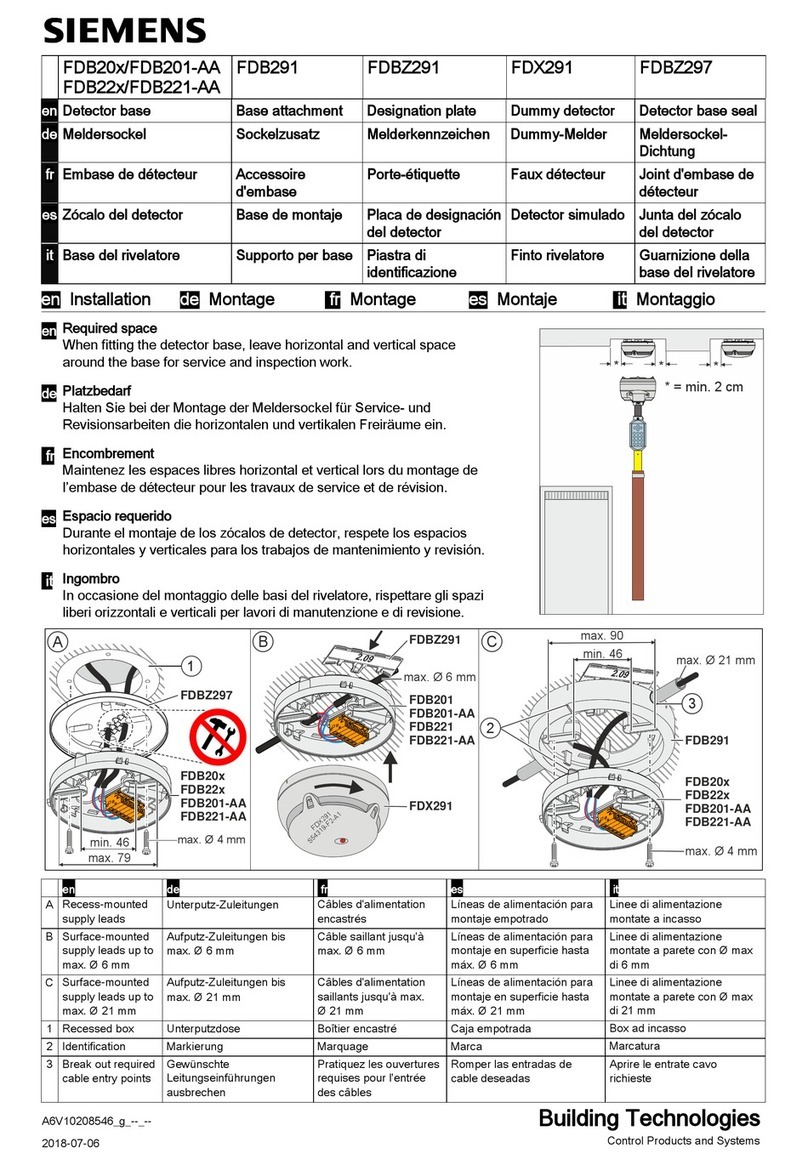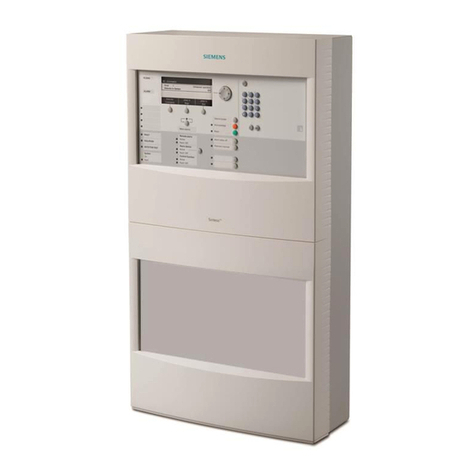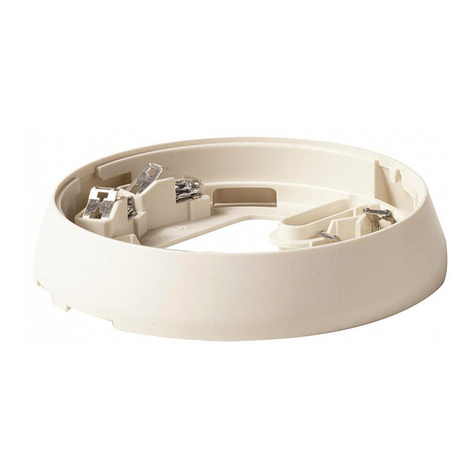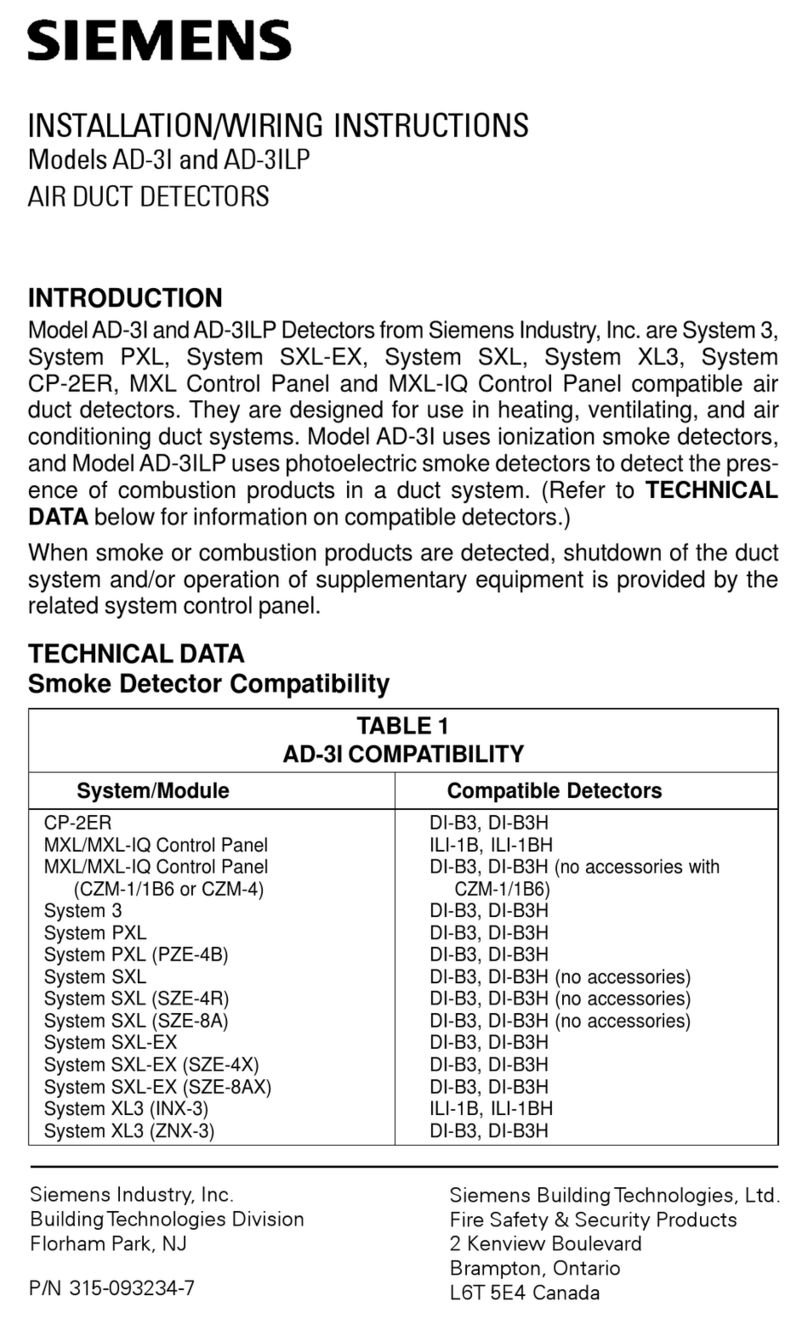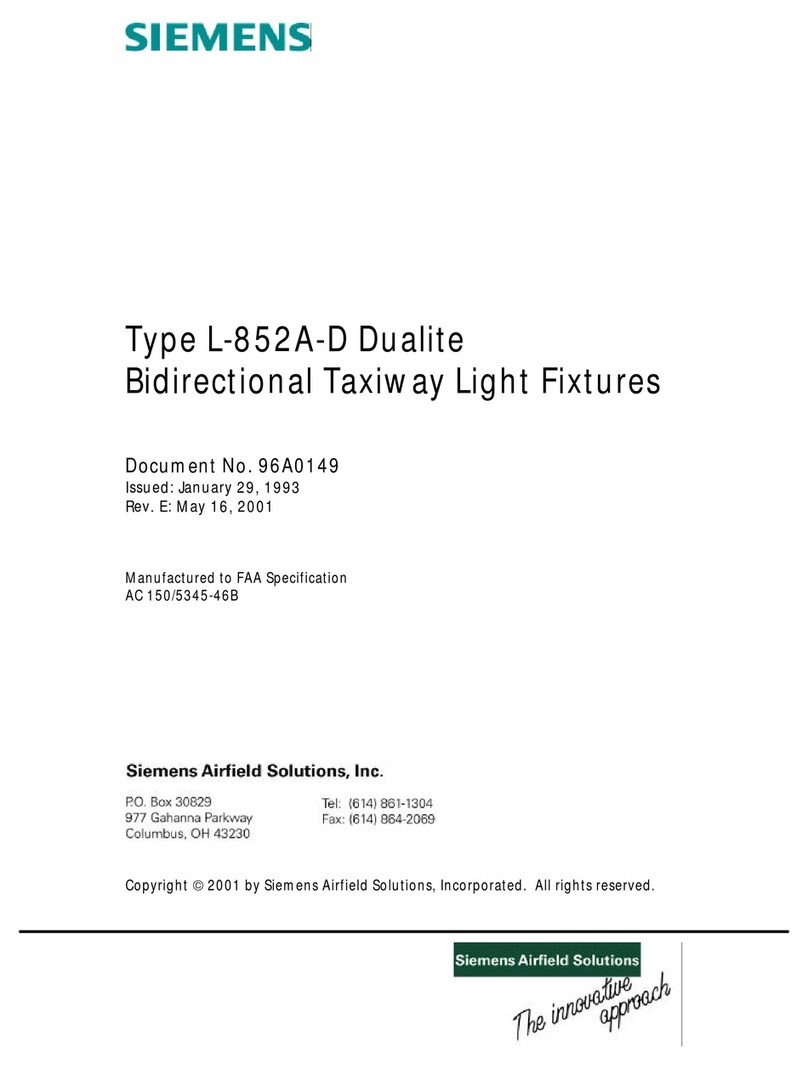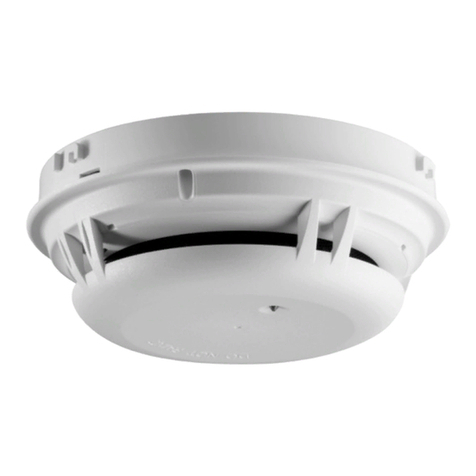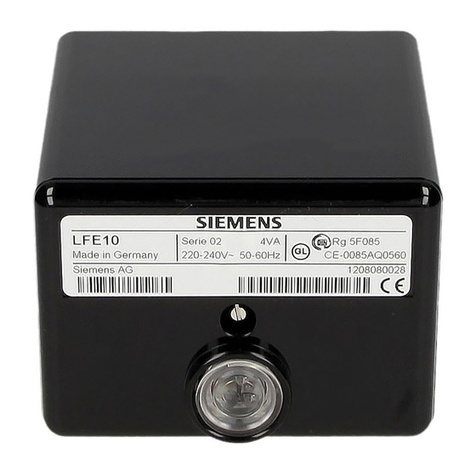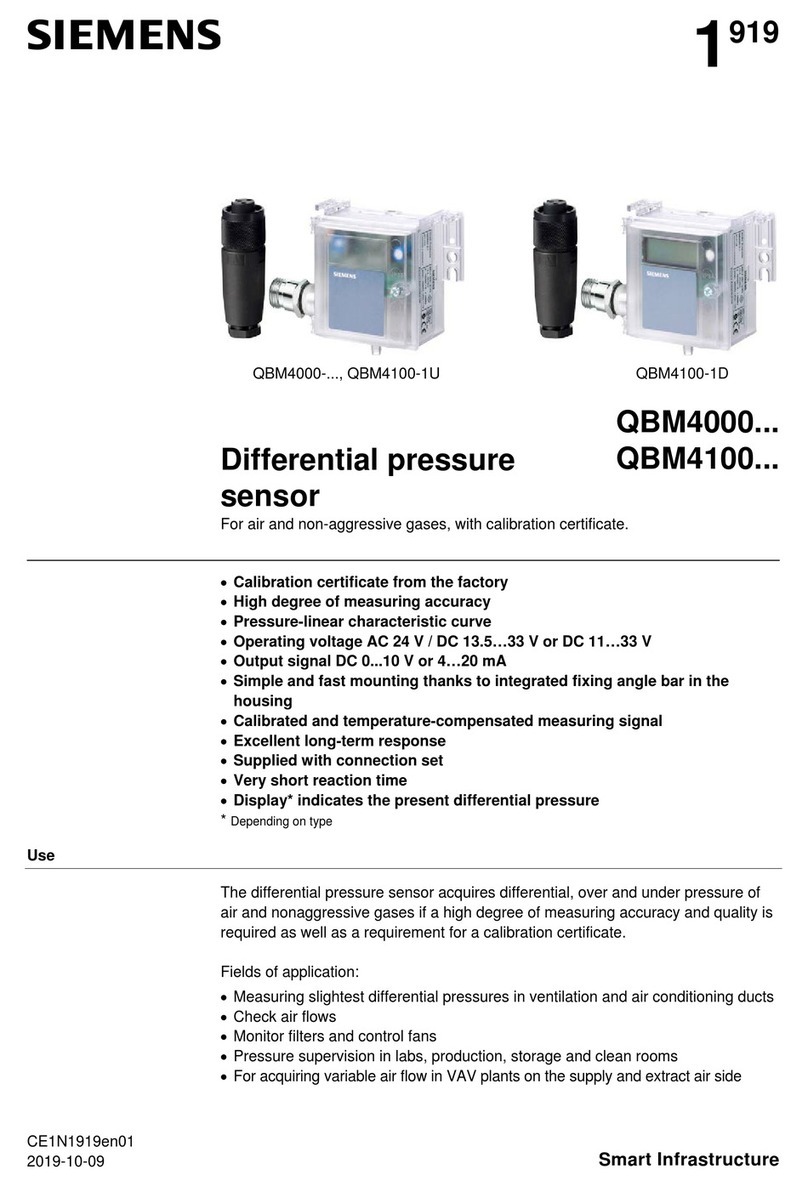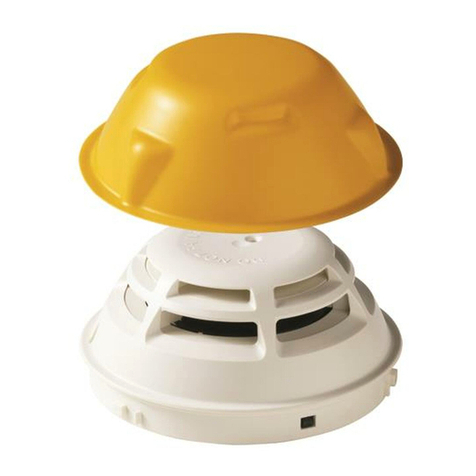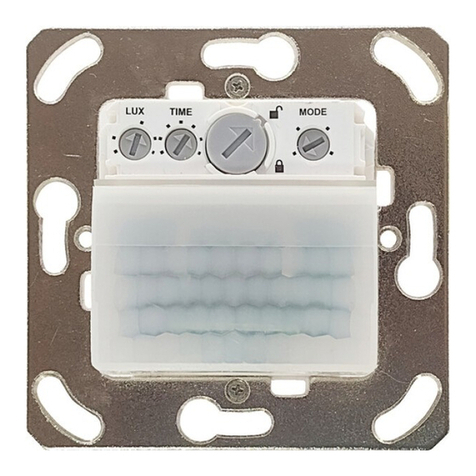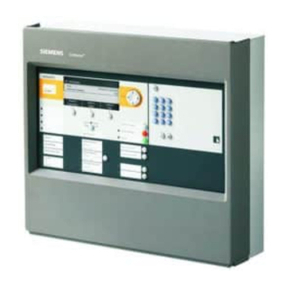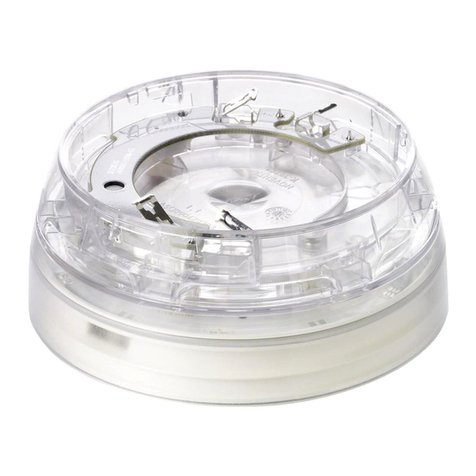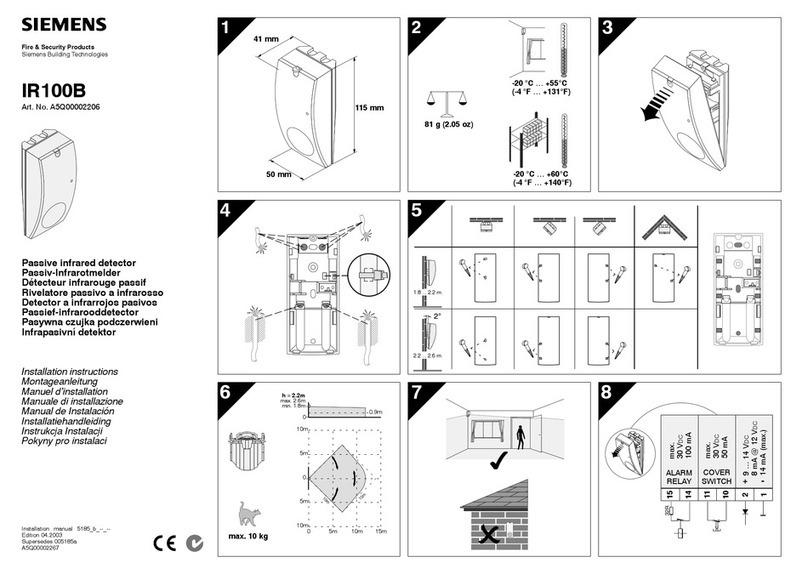2
OPERATION
When the SA-3I or SA-11P is in operation, a sample of air is drawn from the duct and passed
through the sampling chamber at low velocity by means of the inlet sampling tube. The air
samplepassesthroughthesmoke detectormountedinthe ducthousingandis exhausted back into the
duct via the outlet sampling tube.
Standby Indication
DuringnormaloperationthegreenPower LEDonthepowersupplycontrolboard, located inthewiring
compartment of the SA-3I/-11P, is lit, indicating thatAC power is being applied. The alarm and trouble
relays are in non-alarm and non-trouble states during standby operation.
Alarm Indication
Each smoke detector used with the SA-3I/-11P includes an LED for visual alarm indication. If the air
duct detector is not visible, a remote alarm lamp can be used for visual alarm indication. (See
Figure 6 for models.)
Alarm Operation
An alarm signal from the smoke detector within the SA-3I/-11P or from a satellite detector causes
the alarm relay in the SA-3I/-11P to energize.
TheModelSA-3I/-11Pcanbewiredfordirectalarmrelaycontrolofnormallyenergizedandde-energized
devices. Refer to ELECTRICAL WIRING for details. When all products of combustion are cleared from
the duct system, the Model SA-3I/-11P can be reset by operating the RESET switch with the Reset key.
WARNING: Air duct detectors SA-3I/-11P cannot be used for releasing service.
Trouble Condition
Atrouble condition in the SA-3I/-11P or in a satellite unit due to a loss of detector supervision causes
the trouble relay in the SA-3I/-11P to de-energize. Loss ofAC power to the SA-3I/-11P results in the
green Power LED turning off and the trouble relay de-energizing.
MOUNTING THE AIR DUCT HOUSING
Location on Duct System
The air duct detector should be located in the main supply duct, downstream from the filters and
positionedso asto operatereliably incase ofsmoke inany partof theair stream.In instanceswhere
the filters are capable of removing smoke, a detector should be installed both upstream and down-
stream from the filters.
The air duct detectors, because they use sampling tubes which monitor the full width of an air duct,
overcome the limitations of spot-type smoke and heat detectors in the duct. However, since stratifica-
tion can occur in the air stream after a long duct run, it is desirable to locate the detector after bends or
inlets which create turbulence, and hence, a more homogeneous mixture of air. The detector should,
when possible, be located a minimum of six duct-widths downstream from the source of turbulence
(see Figure 1). A 12 inch by 12 inch access hole should be cut in the duct adjacent to the detector
to permit checking and cleaning the sampling tubes.
The air duct detector should be located in the air handling
system,as shownin Figure2, andshould bein conformance
with NFPAPamphlet No. 90A, Air Conditioning and Venti-
latingSystemsandwithNFPA72NationalFireAlarmCode.
(Both publications are available from the National Fire Pro-
tection Association, Batterymarch Park, Quincy, Massachu-
setts.)Thedetectoronthereturnairsideoftheblowershould
be located at a point prior to exhausting air from the building
or diluting return air with outside air.The detector on the sup-
plyairsideof theblowershouldbedownstreamoftheblower.
The detectors should be wired into the system so that they
automatically shut down the blowers and operate dampers
as required.
Mounting the Air Duct Housing (See Figure 3)
a. Affixtheadhesivebackedgaskets(Item1)totheback of thedetectorhousing(2)sothatthe larger
hole on the gasket lines up with the sampling tube hole on the sampling chamber and the
smaller hole with the housing mounting hole.
Figure 1
Typical Mounting of Duct
OUTLET
SAMPLING TUBE
INLET
SAMPLING TUBE
AT LEAST
SIX DUCT
WIDTHS
